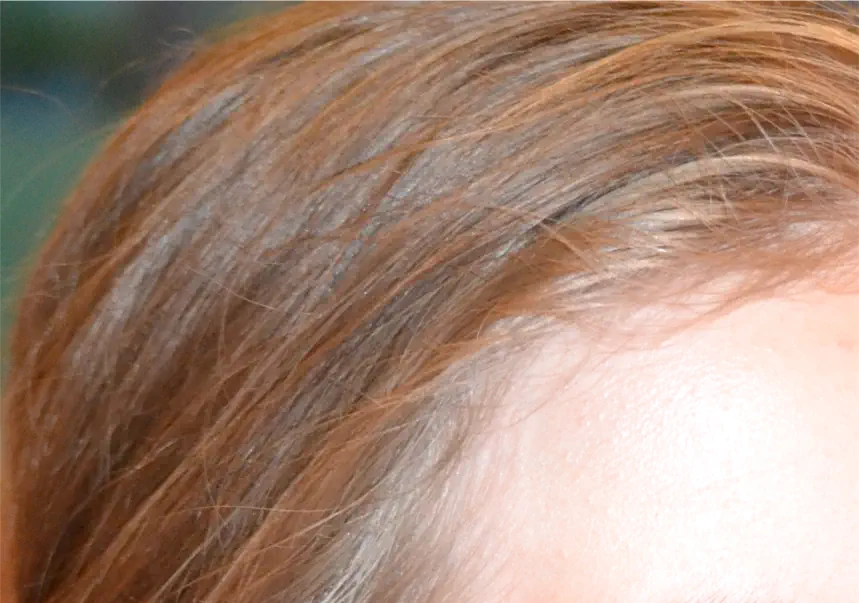Are you having trouble determining your color type? Atypical Cool Types – are you one of them? Or are you simply interested in the diversity of atypical color types? Then you’ve come to the right place. For general information on atypical color types, it’s best to read my blog post “Atypical Color Types.” My online course also helps you recognize whether you are an atypical color type.
Interested in the darker Cool Winter type? You’ll find it among the Atypical Deep Types.
Among Cool Summer and Cool Winter types, there are numerous atypical Cool types. You’ll learn why this is the case shortly with the first “Cool Summer light.” For all subsequent atypical Cool types, they are clearly assigned to their color type and can use their palette without restrictions.
Light Cool Summer
Atypical characteristics are common among Cool types. This is due to the weighting of brightness and saturation, and contrast. A typical Cool type is clearly cool. With Cool Summer, the additional characteristics of brightness and mutedness are both approximately medium. However, it can also happen that the secondary characteristics are not balanced, and brightness, for example, outweighs the others. This would then be a very light Cool Summer, or lighter than typical. The colors of Light Summer usually work well to borrow from, but this type is not bright enough to fully belong to Light Summer. Also, Light Summer is closer to Spring and contains some shades that are not cool enough for this Cool Summer type.
When borrowing colors from its sister palette Cool Winter, this type should be cautious as the colors could be too dark.
Dark Cool Winter
Conversely, there are Cool Winter types that are darker than typical. These types can usually borrow better from the cool “Deep Winter” colors than from the “Cool Summer” colors. However, since there is also a type between Deep and Cool in Deep Winter, they can also find a suitable palette there at “Deep Winter Cool.”
Cool Winter with Light Hair
However, Cool Winter types can also have very light hair. Sometimes, they have very clear, darker eyes as well. Since the contrasts with these types are very high, they often borrow better from Clear Winter colors instead of Cool Summer, which could be too light.
Muted Cool Summer
Instead of brightness, mutedness can also be more pronounced than typical. A highly muted Cool Summer unfortunately cannot borrow colors from Cool Winter. These would “overwhelm” them and make them look pale. The cool colors of the Soft Summer or Soft Summer Light palette work better as additional colors.
Cool Summer with Radiant Eyes
Then there are these Cool Summer types that I initially want to assign to Cool Winter because they have such strikingly radiant blue eyes. However, during the analysis, it becomes clear that the hair, skin and lips have much less saturation and contrast to each other, and therefore only Cool Summer is suitable. These types may prefer the blue tones of Cool Winter over their own blues to make their eyes shine.
Cool Winter with Very High Contrasts
Even with Cool Winter, there are people with much higher contrast than typical. Take, for example, the “cool Snow White” mentioned in the main article “Atypical Color Types.” Usually, these types cannot borrow colors from Cool Summer but should consider the cool Clear Winter colors (if additional colors are desired).
Cool Winter with Reddish Hair
Just because the hair is dark blonde or light brown and the skin is light, doesn’t automatically make one a Summer type. A specific combination is not uncommon for Cool Winter:
Medium to dark blonde hair that sometimes appears lighter or darker and has a reddish undertone. Depending on the incedence of light or photo, this may be more or less visible. However, we cannot speak of a warm red here; there are always undertones of pink, violet, or cool strawberry blonde. Christine Scaman describes this type very well in a blog post on 12blueprints.com with the words: “You’re wrong! She’s an Autumn! She’s a Spring!! – True (Cool) Winter type.”
Hair with these undertones, which are dark blonde to light brown, also occur with Cool Summer and Clear Winter types. However, due to the proximity to Spring of Clear Winter, they are not as unusual as with Cool Winter or Cool Summer.
Using my daughter’s hair as an example, you can see how different this hair color can appear.
Cool Summer/Winter
Contrast and saturation are the two characteristics that mainly distinguish Cool Summer from Cool Winter. In terms of brightness, they are very close to each other. If these two features are unusually strong (for Summer) or low (for Winter), the result is somewhere between Cool Summer and Cool Winter. I jokingly call this type “Cool Sumter.” Whether this type is simply an atypical Cool Winter or Cool Summer, or already an In-Between-Type, is a matter of perspective. This type can use colors from both Cool palettes. However, the most suitable colors can be found on the Cool Sumter Digital Color Palette. It is available for international purchase on my German website. Please use your browser translation for the checkout. You can find more about my offers for international shipping here.





